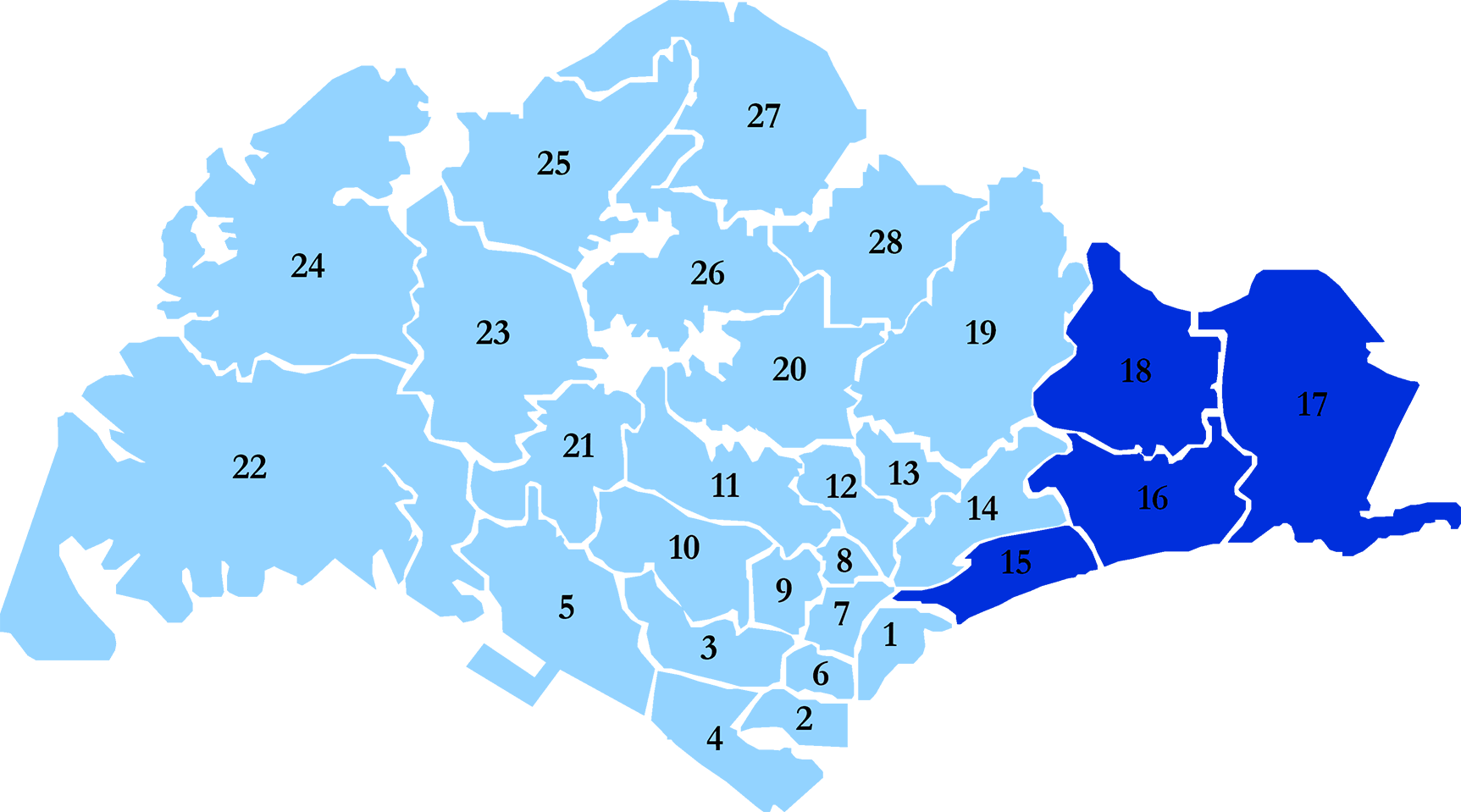
DISTRICT 15
Historical landmarks that survived World War II are scattered all over District 15. The nostalgic areas of Amber Road, Joo Chiat, Katong, Marine Parade and Tanjong Rhu bring back memories each time you walk through the roads. Tourists will find the picturesque place lined with buildings, each with unique stories to tell.
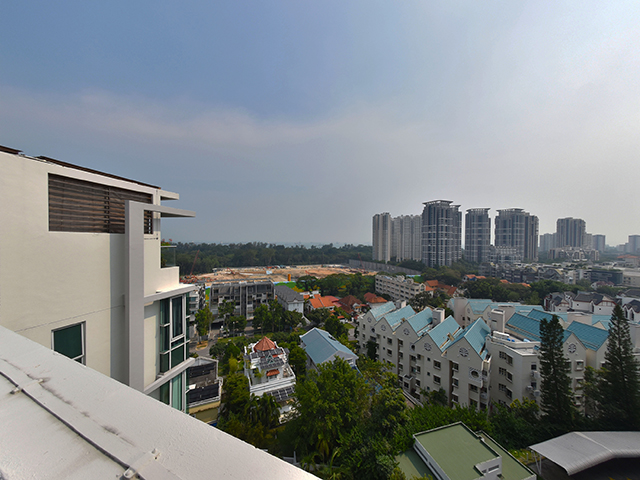 Towards southern Singapore
Towards southern Singapore
Amber Road
Amber Road was named after Amber Elias, a famous Jewish property owner back in the 1920s. She had three sons. The Amber Building on Malacca Street and Amber Mansion on Orchard Road were also named after her. Amber Road was filled with bloodshed during the war. Many anti-Japanese males were killed during the Japanese Occupation at the beach across Amber Road. Today Amber Road is a modern residential area with apartments and mansions such as Amber Towers, Amber Point, Amber Apartments, Amber Lodge, Parkway Mansion, Parkway Apartments and Orchid Mansion.
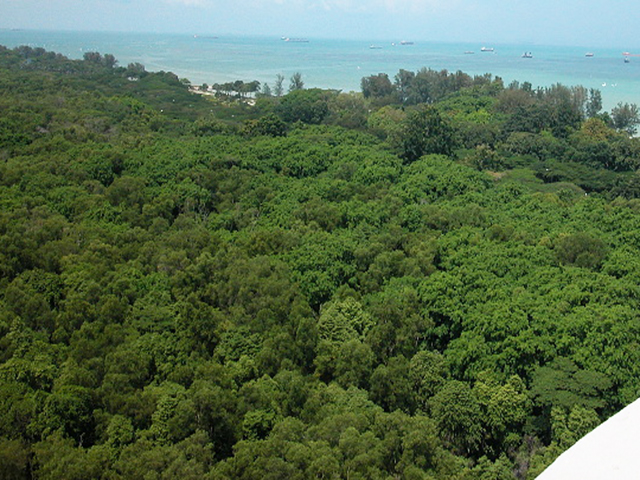 Wonderful views
Wonderful views
Marine Parade
HDB public housing estate and private residences are located along Marine Parade Road, East Coast Parkway, Amber Road and Bedok South Avenue. Marine Parade was named after a promenade near the sea that was aligned to East Coast Road.
Tanjong Rhu
In the south-eastern part of Singapore lies a residential neighbourhood called Tanjong Rhu. It appeared in de Eredia's 1604 Map of Singapore and is referred to as Tanjon R. Previously named Sandy Point, its current name is derived from casuarina trees. The Malay word for casuarina trees is "pokok rhu". Being a place known for ship building and repairing, two renowned boat building companies respectively owned by Captain Flint and Mr Tivendale were started here in the 1800s. In the late 1980s to early 1990s, Tanjong Rhu became an industrial port with shipyards. Unfortunately, the place began to accumulate industrial waste, thus causing the Singapore Government to transform the place into a high-scale residential area. The shipyards were then relocated elsewhere.
DISTRICT 16
District 16 is largely a residential area which comprises Bedok, Upper East Coast Road and Chai Chee. Some commercial buildings such as Siglap Shopping Centre and Crescendo Building cater to the needs of the neighbourhood.
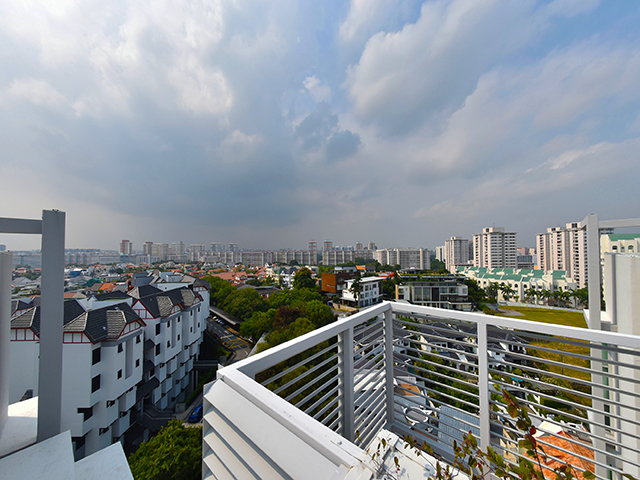 Towards northern Singapore
Towards northern Singapore
Bedok
Bedok is a residential area in the eastern part of Singapore. It is even referred to in the 1604 Manuel Gomes de Eredia's map of Singapore. The Bedok New Town is developed in April 1973. It is the fifth HDB new town to be developed and is still being developed even after 15 years. Bedok is one of the native names that came into existence around the time of Sir Stamford Raffles and it got its name from Sungai Bedok, a river which is part of the present Tanah Merah. Bedok New Town is built around a unique landscaped park and sports complex.
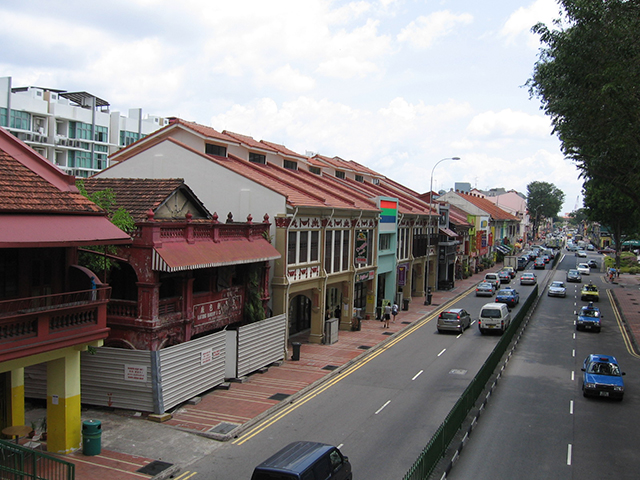 A treasured heritage
A treasured heritage
Siglap
Consisting primarily of low-rise residential properties, Siglap is a neighbourhood located in the eastern part of Singapore, and established in 1955. It falls under the Bedok Planning Area, which was developed by the Urban Redevelopment Authority.
Upper East Coast Road
East Coast Road begins at the junction of Tanjong Katong Road and Mountbatten Road, extending towards Upper East Coast Road and forms a junction with Siglap Road before ending at Bedok Road. Bounded by the Siglap area, it consists of private apartments and residential estates.
DISTRICT 17
Popularly known as the place where Singapore's Changi International Airport is situated, District 17 encompasses Changi and Loyang. This district also marries old and new elements – the historical remnants of World War II and the modern façade of Singapore's aerospace industry.
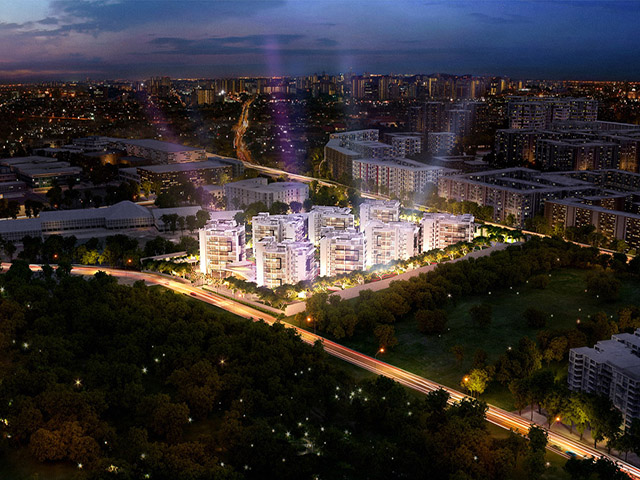 Near to Changi Airport
Near to Changi Airport
Changi
Known as Tanjung Rusa in the 1600s, Changi was later renamed Tanjung Changi in the 1800s. Changi is actually a name of a plant that was grown in the area. Currently, Changi is predominantly a spacious area with very little buildings, with its narrow streets lined by angsana and palm trees. A perfect and idyllic place for picnics, Changi is often the preferred place for a weekend family picnic. The residential areas are mainly populated by people working in the nearby airline companies.
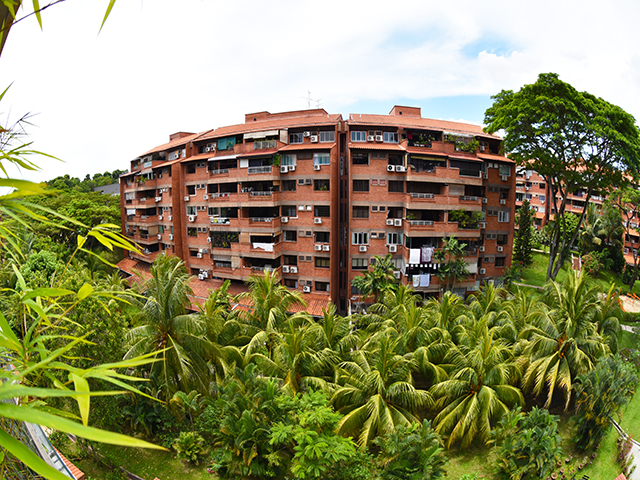 The eye-catching development of the east
The eye-catching development of the east
In the past, the British cleared the area to build military barracks, administrative quarters, an airbase, a hospital in 1926 and the Changi Prison in 1936. These historical buildings still exist today. An important World War II site, Changi Prison kept about 7,000 to 8,000 prisoners of war (POW) during the time. Prominent POWs included H.L.A Hart, a British jurist and law philosopher.
Loyang
Between Changi and Pasir Ris lies Loyang, a small residential and industrial area. It is also known as Kampong Loyang. While the origin of the name "Loyang" is unknown, this name is a variation of "Luo Yang", a city in China. The biggest estate that is near Loyang is Pasir Ris, which is located across the road from Loyang.
DISTRICT 18
District 18 consists of Simei, Tampines and Pasir Ris – residential areas with numerous amenities and facilities within the vicinity. A great and convenient place to live, it is located in the eastern part of Singapore.
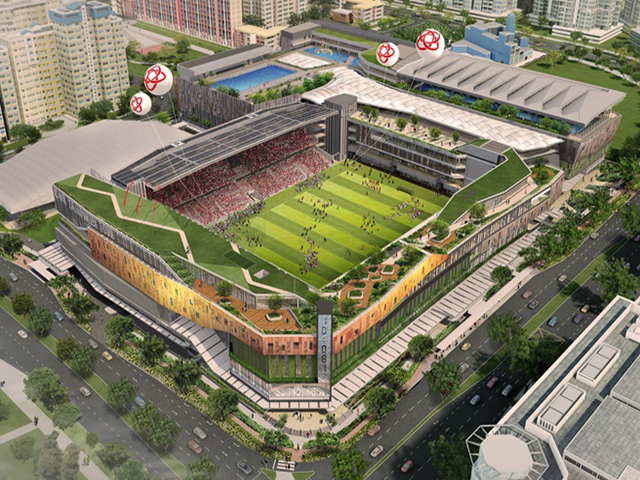 The bustling central of the east
The bustling central of the east
Simei
You can find all types of housing in Simei, from HDB flats to condominiums to landed property. Lately, this place has become a popular spot for expatriates. Simei used to be a village by the sea with a nice seaview. However, due to land reclamation in the area, the sea is no longer visible from Simei. The name Simei was derived from a Chinese painting of four beauties – Simei means four beauties in Chinese.
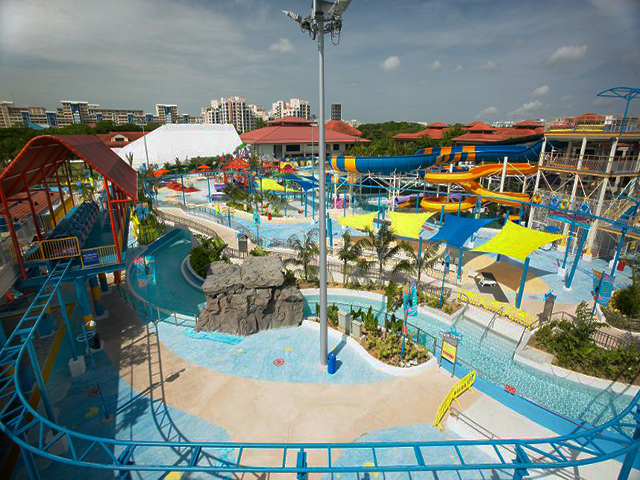 Family oriented recreation zone
Family oriented recreation zone
Tampines
Previously a fishing village, and later converted into fish farms, Tampines is now a neighborhood estate comprising of HDB flat and condominiums. The fish farms were relocated to Pasir Ris. Tampines got its namesake from an endangered tree, the "tampinis". It is a thriving commercial and residential area now, with various amenities and facilities.
Pasir Ris
A family-oriented housing and recreational area, Pasir Ris is a place of fun for everyone with its homely atmosphere and endless entertainment. With numerous resorts, chalets and amusement parks in the area, it is the perfect holiday getaway for the family. Pasir Ris means white sand in Malay. It was a description of the sandy beaches in Pasir Ris found in the area back in the early days.